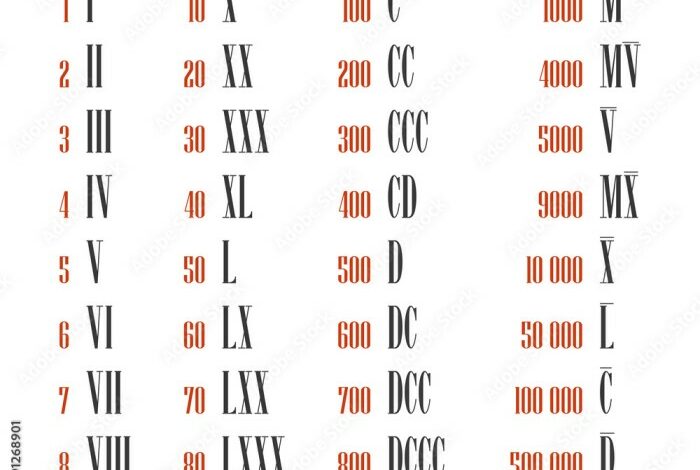Unlocking the Past: Roman Numerals Converter

In a world dominated by the sleek efficiency of modern Arabic numerals, the elegant and timeless Roman numerals continue to hold a place of historical significance and aesthetic appeal. These ancient numerical symbols, rooted in the history of the Roman Empire, evoke a sense of nostalgia and a link to the past.
While they may not be as practical as their Arabic counterparts for everyday calculations, they remain a vital part of our cultural heritage, appearing on clocks, buildings, movie credits, and even in the names of monarchs and popes. Understanding and converting Roman numerals is like deciphering a secret code that unlocks a rich historical tapestry.
The Roman Numeral System: A Brief Overview
The Roman numeral system, used by the ancient Romans for counting and recording numbers, is based on letters from the Latin alphabet. The method primarily comprises seven symbols: I, V, X, L, C, D, and M, representing 1, 5, 10, 50, 100, 500, and 1000, respectively.
By combining these symbols, a variety of numbers can be expressed. However, unlike the place-value system of Arabic numerals, Roman numerals are additive and subtractive, making them more challenging to work with.
The Need for Conversion
While Roman numerals are still used in specific contexts, such as indicating book chapters, numbering lists, or denoting specific years on clock faces, they are no longer widely used for arithmetic calculations. This is mainly due to the more efficient nature of the Arabic numeral system.
Converting Roman numerals to Arabic numerals (and vice versa) is essential when interpreting historical records, inscriptions, and dates or when dealing with traditional timekeeping methods.
The Roman Numeral Converter: Bridging the Gap
With the advent of technology and the widespread availability of online tools, converting Roman numerals has become an effortless endeavor. Roman numeral converters are user-friendly digital tools that allow individuals to input a Roman numeral and instantly receive its Arabic numeral equivalent or vice versa.
These converters employ algorithms that recognize the patterns of Roman numerals, making the conversion process quick and accurate.
How Roman Numeral Converters Work
Input: Users enter a Romannumeralsconverter or an Arabic numeral into the converter’s input field.
Recognition: The converter algorithm recognizes each Roman numeral symbol and its corresponding value.
Calculation: The algorithm performs the necessary measures to determine the value of the entire Roman numeral, which might involve both additive and subtractive operations.
Output: Depending on the input, the converter displays the equivalent Arabic or Roman numeral.
Validation: Many converters also include error-checking mechanisms to ensure the input is valid and corresponds to a legitimate Roman or Arabic numeral.
Beyond the Basics: Advanced Features
While the primary purpose of a Roman numeral converter is to provide quick and accurate conversions, some versions come with additional features that enhance user experience:
Educational Resources: Some converters explain the Roman numeral system, helping users understand the conversion process.
Conversion History: A history feature allows users to review past conversions, promoting learning and reference.
Contextual Usage: Some converters offer examples of where Roman numerals are commonly found, helping users connect the conversions to real-world applications.
Custom Formatting: Users can choose different formats for the output, such as uppercase or lowercase Roman numerals.
Preserving the Past
Preserving historical and cultural heritage remains paramount in a world driven by rapid technological advancements. Roman numeral converters serve as a bridge between the ancient past and the modern world, enabling us to decipher inscriptions, interpret historical documents, and appreciate the artistry of Roman numerals.
As we forge ahead, these converters ensure that the legacy of Roman numerals remains accessible and understood, allowing us to connect with our history and heritage meaningfully.




